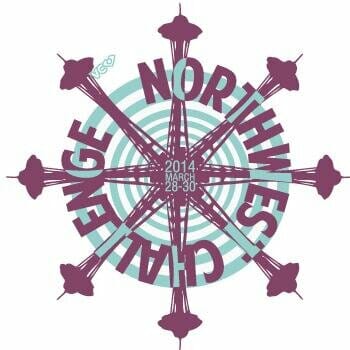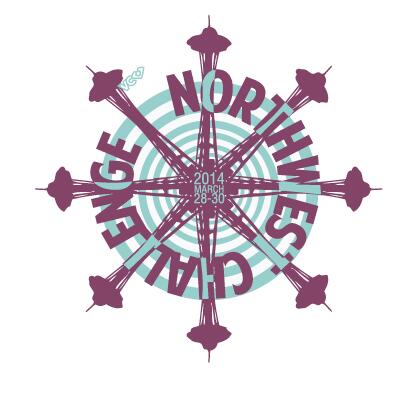A cheer or a chant can get any team psyched up to compete, but at the elementary school level it offers a great (and sometime badly needed!) way to keep players engaged while on the sidelines. The process of creating a new cheer gets the kids thinking about the other team, as well as themselves. Doing a constructive, fun cheer can also help teams bond, both within their own members and between rivals. In any case, it’s important to clarify the difference between a cheer and taunts used to distract someone trying, e.g. when trying to catch the disc.
The best explanation for why cheering is part of the culture of ultimate comes from the thesis of Lindsay Pattison, The Dynamics of the Disc, in which she writes:
One of the ways that Ultimate players perform spirit is by recognizing or “acknowledging” their opponents in some fashion. Cheering — changing the lyrics of well-known tunes and serenading your opponents as recognition of an enjoyable on-field experience — fulfills this function. Cheering also helps to diffuse any residual competitive tension since “it‟s hard to stay angry at a team when you are singing them a song.” Tony Leonardo claims that “post-game cheers are sometimes considered an extension of Spirit of the Game.” Montreal players recall that when they first began playing in the mid-1990s cheering was akin to presenting “a gift to the other team,” and it was considered essential: “the game was not done until each team had cheered each other.”
She goes on to explain how cheering can sometimes go awry:
“Slagging‟ refers to a particular type of cheer designed to tease, make fun of, or disparage the other team. Players describe it as “good-natured ribbing.” True slag artists, however, following the credo of “the cruder, the better,” often crossed over the line of good taste. Montreal players recall “g[etting] off on writing the filthiest cheers.” Some of “those cheers were nasty! And there was a real competition to see who could be the most crude.” But, in a friendly environment such as the municipal league, where “everybody knew everybody else, … slagging your friends was fun.” Even at tournaments, where opponents may not know each other as well, slag cheers have been used as expressions of friendship or as acknowledgment for a particularly enjoyable game.
It’s unfortunate that most of the spirited cheers created and used by collegiate and adult club teams are totally inappropriate for younger players. A rare exception at the collegiate level from the town of Walla Walla in Eastern Washington (where many onions are grown) was recounted as…
Neither wind nor snow, however, could drown out the traditional Whittie [Whitman] cheer of “Slice ‘em, dice ‘em, sauté, fry!”
Maybe it will be best for the sport if youth ultimate players and coaches nurture a culture of constructive, wholesome cheering, so that — in the long run — some of the crude, lascivious, druglorifying cheers belted out by raucous adult players are diluted and down-played. To that end, here are a few cheers created and used by Seattle elementary school teams. Some are used randomly, some to rev up the team when pulling, and others are delivered with spirit at the end of the game when both teams meet in the middle of the field.
Whittier WUF Gang came up with this call and response after hearing a high school team at Spring Reign doing it as a riff on Muhammad Ali’s “float like a butterfly, sting like a bee.” Coach Kevin Bolduan was impressed with the energy it brought to the game and also saw an opportunity to help his players remember to “pancake” the disc when catching throws between waist- and eye-level:
Bench: Pancakes, Waffles!
On-field: French Toast, WUF Gang!
Our team of mostly 5th graders sought to emulate this cheer and came up with something very organic (viva Seattle):
Bench: Asparagus, asparagus, cauliflower!
On-field: Yum, yum! Broccoli!
Tomaytoes, potaytoes; Tomahtoes, potahtoes.
… (it’s still evolving.)
The WUF gang also did a great cheer for us at the end of our “sudden victory” game, led by one or two kids (a coveted role they tend to argue over):
Leaders: What are the [Blasters] ?
Rest of team: DYNAMITE!
(Repeat 3x)
Everyone: “tick, tick, tick, tick, tick, tick, BOOM!”
Everyone falls back and down in unison.
I’ll keep adding them as I learn and hear them this season. If you have some favorites, please add them in the comments!
In the interim, it’s interesting to think about how young players could bring back the cheer. For as Lindsay points out (pp. 98-103), cheering traditions are in decline among both the increasingly-competitive and the less-indoctrinated groups of players —
There are a couple of explanations for the decline of the cheer. It is a common belief among players that cheering first fell out of fashion at the competitive level. As SOTG came to be associated more squarely with the appropriate way to comport oneself on the field, off-field and post-game expressions of spirit eventually became superfluous. In the mid-nineties “teams like Boston and New York, these elite teams in the States,” who, while maintaining an interest in sportsmanship and fair play, “had no interest in „let‟s do a song after the game‟ kind of spirit.”
….
But acknowledging one another has not disappeared; it has morphed into other – some may argue, more appropriate — practices.
Acknowledging one another can be done with a quick game (such as a rock/paper/scissors race), bestowing of prizes, sharing of food, or a brief „hip-hip- hooray.‟ In many international tournaments the „spirit circle‟ where teams come together and discuss the game post facto takes the place of cheering. While not as elaborate or creative, these practices replace the cheer as means of diffusing tension, fostering camaraderie, and expressing sportsmanship.
However, while admitting that it could seem silly or even lame, not to mention that to do it well is time-consuming and difficult, most people, even the most vehement cheer-haters, have fond memories about a particularly spectacular cheer, gifted cheer- writer, or slag artist. “Certain people,” claims Rose, “are so incredibly creative and talented and you could witness that when people were doing cheers.” Some players lament the loss of the cheer and have expressed the wish to see that particular aspect of the game revived.
This spring, I’ll be listening for a cheer in the “major league” games… but I’m guessing such spirited banter will have to originate from the (youngest?) fans.



